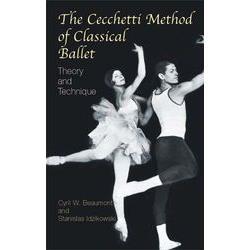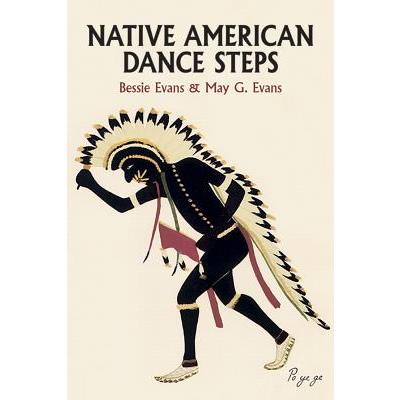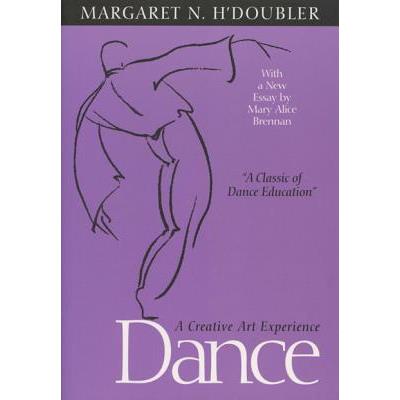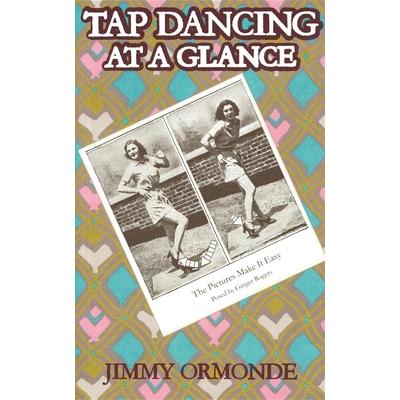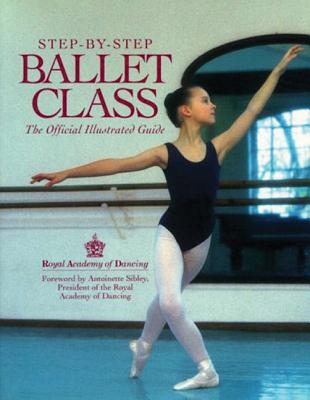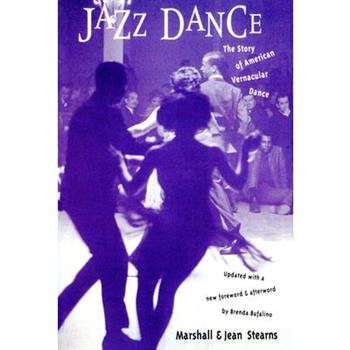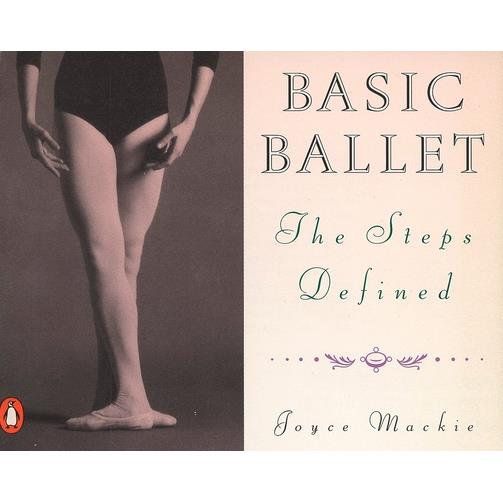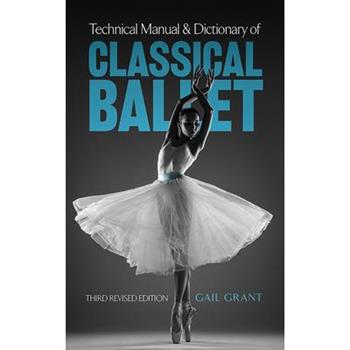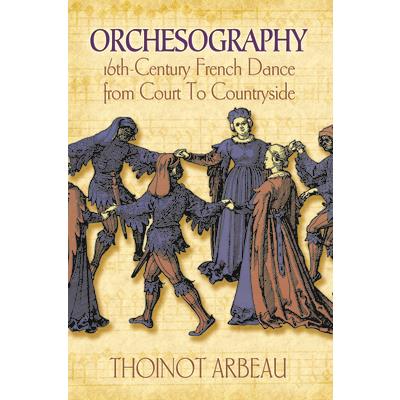The Cecchetti Method of Classical Ballet
This dance classic presents a complete beginning course in classical ballet. The founder of this method, Enrico Cecchetti (1850-1928), performed and taught in Russia and with Diaghilev's troupe. By elaborating on a logical progression of exercises, Cecchetti provided dance with an unprecedented unity -- balancing the adagio and allegro, re-establishing the notion of "legato," strengthening the arabesque, and developing the exercise of the pli矇s. Cyril W. Beaumont, a distinguished writer on ballet, has codified Cecchetti's program of study with the assistance of one of Cecchetti's star pupils, Stanislas Idzikowski, and with the approval of Cecchetti himself.The first chapter defines and illustrates the basic theory of the positions, body movements, and technical terms. Detailed chapters of exercises include "Exercises at the Bar," "Port de Bras," "Centre Practice," "Adagio," and "Allegro." Each exercise appears with a numbered series of instructions, and a table of daily exercises for the week is provided. The text is accompanied by 109 line illustrations, showing positions and movements of the body in detail and offering ballet lovers a perfect guide to the basics of classical ballet.
Native American Dance Steps
This well-researched book provides details of the varied steps that certain groups of Native Americans have used to express their dance ideas - from skips, jumps, and hop steps, to an Indian form of the pas de bourr矇e. Similarities to Oriental dances, classical ballet, Spanish and Russian variants, and steps in other dance forms are also considered. Examples are given of Indian dance music, words, and descriptive sounds that accompany this music, and the choreography of certain typical Indian dances of the Southwest. Authentic illustrations by a Native American artist depict dancers, while outline figures characterize steps and postures. An inportant addition to the libraries of anthropologists and students of Native American culture, this classic will be invaluable to ethnomusicologists and choreographers.
Martha Graham
"Focuses on the celebrated technique, though the stuff of memoir naturally seeps in as well . . . . The illuminating, aphoristic comments appended to specific exercises recall the rich verbal imagery Graham employed, famously, in her teaching."--Los Angeles Times "The only book in print with a syllabus of her movements (including advanced work)."--Dancer "Recommended for all dance and theater collections . . . . Invaluable."--Backstage Marian Horosko brings together new and previously published interviews of Martha Graham's "family" of dancers, teachers, choreographers, and actors and interweaves them with provocative biographical material about the life and influence of the creator of classic modern dance. The interviews testify to the remarkable legacy that inspired the careers of many in the dance world, among them dancers from the contemporary generation who inherited her technique but never saw her perform. The interviews of teachers, all former Graham students, reflect their passion for maintaining Graham's few fixed principles and her emotional integrity. Some of the foremost actors of Graham's time describe their stormy encounters with her as she attempted to teach them that "movement doesn't lie." This book offers the only syllabus in print of Graham's work. Drawn from a private film of a class for her advanced and professional company members in the 1960s, it includes comments from Graham and speaks to her use of imagery in teaching. Detailed photographs document the development of Graham's choreographic legacy, which expanded and changed as she created each new work, more than 200 in all. These images, along with the interviews and commentary, plot the evolution of Graham's methodology and vocabulary of movement, on which classical modern dance continues to rely.
Dancing
Looks at the history of dance, dance around the world, and influential dancers and choreographers of the past and present.
Dance Pathologies
A history of dance's pathologization may startle readers who find in dance performance grace, discipline, geometry, poetry, and the body's transcendence of itself. Exploring dance's historical links to the medical and scientific connotations of a "pathology," this book asks what has subtended the idealization of dance in the West. It investigates the nineteenth-century response, in the intersections of dance, literature, and medicine, to the complex and long-standing connections between illness, madness, poetry, and performance. In the nineteenth century, medicine becomes a major cultural index to measure the body's meanings. As a particularly performative form of madness, nineteenth-century hysteria preserved the traditional connection to dance in medical descriptions of "choreas." In its withholding of speech and its use of body code, dance, like hysteria, functions as a form of symptomatic expression. Yet by working like a symptom, dance performance can also be read as a commentary on symptomatology and as a condition of possibility for such alternative approaches to mental illness as psychoanalysis. By redeeming as art what is "lost" in hysteria, dance expresses non-hysterically what only hysteria had been able to express: the somatic translation of idea, the physicalization of meaning. Medicine's discovery of "idea" manifesting itself in the body in mental illness strikingly parallels a literary fascination with the ability of nineteenth-century dance to manifest "idea," suggesting that the evolution of medical thinking about mind-body relations as they malfunction in madness, as well as changes in the cultural reception of danced representations of these relations, might be paradigmatic shifts caused by the same cultural factors: concern about the body as a site of meaning and about vision as a theater of knowledge.
Tap Dancing at a Glance
Published originally in 1911, this fully illustrated instructional quide to tap-dancing is just the ticket to keep you stomping and hoofing all the way to the bank. The cover says the pictures make it easy...?Some pictures are posed by Ginger Rogers, all the rest are posed by other starlets of the period.
Step-By-Step Ballet Class
Seven lessons follow a young dancer's development, from basic positions and postures to more advanced levels.
Jazz Dance
"The phrase jazz dance has a special meaning for professionals who dance to jazz music (they use it to describe non-tap body movement); and another meaning for studios coast to coast teaching 'Modern Jazz Dance' (a blend of Euro-American styles that owes little to jazz and less to jazz rhythms). However, we are dealing here with what may eventually be referred to as jazz dance, and we could not think of a more suitable title. "The characteristic that distinguishes American vernacular dance--as does jazz music--is swing, which can be heard, felt, and seen, but defined only with great difficulty. . . ." --from the Introduction
Classical Ballet Technique
"Classical Ballet Technique is an invaluable guide for students, teachers, and ballet lovers. It not only covers the broad spectrum of ballet vocabulary but also gives sound, practical advice to aspiring dancers. The clarity of the writing, in a field notorious for its opaqueness, is in itself a major achievement."--Merrill Ashley, Principal Dancer, New York City Ballet"An excellent, comprehensive guide to ballet pedagogy valuable to teachers and students alike. For many years Gretchen's has been a major voice in the dance community, and this extensive work details the study of classical ballet from her unique and expert point of view. I applaud her, and I heartily recommend Classical Ballet Technique."--David Howard, International Ballet Master and Master Teacher"Gretchen Warren has undertaken a monumental task and has completed it with distinction. Obviously a labor of love, this book's attention to detail and the clarity of its text and photos make it a valuable contribution to the lexicon of ballet. I recommend it to every serious student and teacher."--Thalia Mara, Founding Director, Ballet Repertory Company and National Academy of Ballet; Artistic Director, U.S.A. International Ballet Competition"Congratulations to Ms. Warren for her authoritative book on classical ballet. Thanks are in order too from the many professional teachers, dancers, and students of the art form who will benefit from this book-an essential addition to any dance lover's library."--Lawrence Rhodes, Artistic Director, Les Grands Ballets CanadiensGretchen Ward Warren studied at London's Royal Ballet and the National Ballet School of Washington, D.C. She was soloist with the Pennsylvania Ballet for eleven years and ballet mistress of American Ballet Theatre II from 1978 to 1983. She is professor of dance at the University of South Florida and frequently appears as a master teacher on the national and international circuits. Susan Cook has photographed the performing arts for the past fifteen years. Her work has appeared in Time, Newsweek, the New York Times, and many dance books. Her own books of photographs include In a Rehearsal Room and The Alvin Ailey American Dance Theater.
The Moment of Movement
Dance improvisation, the intriguing phenomenon of the creative process alive in the moving body, exists powerfully, sublimely - lending insight, solving problems, allowing moments of transcendence, diversion, and delight. Flourishing especially since the postmodern movement of the 1960s, it has come into its own in the performing arts. While there are many books containing ideas for developing improvisations, few have tackled the difficult questions: \u201cWhat is dance improvisation?\u201d \u201cHow does it work?\u201d or \u201cWhat is its body of knowledge?\u201dThe Moment of Movement goes beyond lists of improvisations and into the heart of improvising. As in their previous book, The Intimate Act of Choreography, the authors pursue both the philosophical and the practical. They begin by examining the creative process as it applies to movement and especially the kinesthetic way in which the body knows and uses movement. They answer the often unstated and pertinent questions of the novice; investigate the particular skills and traits needed by the leader; consider ways of working with specific populations; and provide challenging material for advanced movers. They discuss the use of music, and the specific situation of improvisation in performance. For leaders who want to design their own improvisations, they trace the evolution of an idea into an actual content and structure. They also address the controversial issue of the legitimacy of improvisation in an academic curriculum. A final chapter presents hundreds of improvs and improv ideas, grouped into units and cross-referenced.The Moment of Movement is not tied to any one point of view. The authors? presentation of a broad range of material is flexible enough for use by choreographers, directors, educators, and therapists. In its perceptive investigation of the experiential and conceptual aspects of dance improvisation, this book articulates the ephemeral.
Basic Ballet
All the basic movements in classical ballet, illustrated with 275 detailed photographs. This unique handbook shows all the basic positions, steps, and movements in classical ballet, arranged in the sequence of lessons usually followed over six years of training. An invaluable practice manual for dance students, it is also a wonderful companion to the dance for ballet enthusiasts or anyone who wants a better understanding and appreciation of the art.
Basic Principles of Classical Ballet
Although the stars of Russian ballet Anna Pavlova and Tamara Karsavina possessed a national manner of dancing, there was no truly Russian school of dancing until the 1930s. The development of this school was largely due to Mme. Vaganova (1879-1951), not only a great dancer but also the teacher of Galina Ulanova and many others and an unsurpassed theoretician.The principles of Vaganova's system are presented in this well-known book. Mme. Vaganova's aim of creating a personal approach to the Russian dance was based on the critical assimilation of the experience of her contemporaries. Her ability to choose the best of what had been accomplished in the various ballet traditions (French, Italian, and Russian) and combine these into a unified teaching practice in itself amounted to a new school of dance. She firmly believed that the teaching process should be a planned exercise, ever changing with innovations in the dance. She sought from her pupils emotional expressiveness, strictness of form, a resolute, energetic manner of performance, and the understanding of the underlying coordination of movements.Her book discusses all basic principles of ballet, grouping movements by fundamental types. Chapters cover battements, rotary movements of the legs, the arms, poses of the classical dance, connecting and auxiliary movements, jumps, beats, point work, and turns as well as material for a sample lesson. Diagrams show clearly the exact foot, leg, arm, and body positions for the proper execution of many steps and movements. The result is a fundamental theory of dance that offers dancers, teachers, and ballet lovers information often difficult to locate in other books. 118 illustrations.
Technical Manual and Dictionary of Classical Ballet
"Miss Grant has made more information available in one book than we have ever had before. Teacher's organizations would do well to consider the use of Miss Grant's Technical Manual as an official textbook." -- Dance MagazineTeacher recommended, Gail Grant's Technical Manual has long been one of the most popular and effective ballet reference guides. Completely revised and updated, this third edition is virtually a new work and should be owned by every student, dance teacher, choreographer, and ballet enthusiast -- even those who purchased the second edition. Extensive revision, expansion, and the inclusion of more than 300 new terms have added immeasurably to the value of this concise, definitive manual.Moving from "abstract ballet" and "adage, adagio" to "working leg" and "wrapped position," the book fully describes and defines over 1,100 ballet steps (saul de chat, jet矇 envelopp矇, failli, entrechat six, etc.), movements and poses (arabesque, 矇paulement, attitude, en arri癡re, retir矇, ? terre, d矇gag矇, etc.), and other expressions and concepts. For each, first a phonetic transcription is provided, then a literal translation, and finally an explanation of how the step is performed, the pose captured, or the movement executed, of how the concept fits in with actual ballet dancing, or of the purpose or function of the idea. A pronunciation guide, cross-references to alternate names for similar steps and positions that vary from the Russian to the French or Italian schools, and a bibliography are all invaluable aids.But the most important supplement is the 15-page pictorial section, drawn by the author, who is both a successful ballet teacher and dancer. Keyed to the dictionary (and vice-versa), these diagrams show clearly the exact foot, leg, arm, and body positions for the proper execution of many of the more common ballet steps and movements. This essential and easy reference is a must for every teacher, aspiring dancer, and ballet class.
Orchesography
The most valuable resource for 16th-century dances and dance music, this volume describes galliards, pavans, branles, gavottes, lavolta, basse dance, morris dance, and more, with detailed instructions of steps. 44 illustrations.





